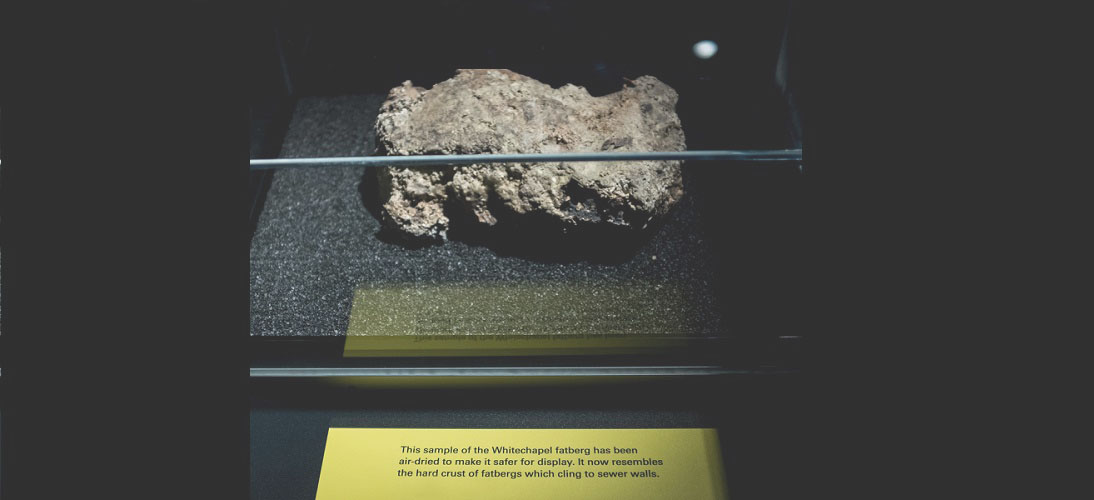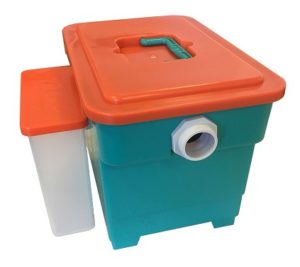
The Whitechapel Fatberg | Less Famous Fatbergs | What We Know About the Perfect Fatberg Breeding Ground | The Aftermath of a Fatberg | Education is the Key | Renewable Energy Source
Following the well publicised discovery of what is thought to be the UK’s largest fatberg on record in Whitechapel 2017, the issue of congealed masses of public waste has hit the headlines. Build-ups of fats, oils and grease (or FOG, as it’s known in the industry) held together with baby/wet wipes, sanitary products, nappies and a whole host of other household items, became big news. This was a new phenomenon to the majority of the population, one thought unlikely to be repeated anytime in the near future.
Rather than being an anomaly, a once in a lifetime story, this has become worryingly common, not just on a national level but on a global scale. Past stories began to emerge detailing the full extent of the problem. Unfortunately, with the emergence of yet another obstruction to the UK sewer system, this time in Sidmouth, it’s become evident that this is now an ongoing crisis worldwide.
The Whitechapel Fatberg
The Whitechapel monster captured the public's attention for its sheer unimaginable size, the grotesqueness of its creation and the absurdity that the scale of fascination led to a chunk being displayed in the Museum of London. While the new arrival to the fatberg party isn’t as large as its predecessor, it does highlight the necessity to tackle the source of these fatbergs head on with the public and businesses taking responsibility for their actions and considering the effects of their ‘flushing’ antics and disposal methods for kitchen waste.
The bare bones or integral frame of a fatberg is heavily reported to consist of products that the public flush down the toilet on a daily basis. Solidified FOG, mainly from commercial foodservice businesses, acting as the glue to hold the structure together. The general public, captivated by the idea of something so disgusting lurking in the depths of cities, began to grasp the seriousness of the Whitechapel situation – the cost involved in clearing the blockage, the damage to the environment and wildlife and the potential compromise to the structural integrity of the sewer system.
Other stories of past formations began to come to light. The fight against the fatberg was gaining momentum.
Less Famous Fatbergs
| When? | Where? |
| August 2013 | Kingston-upon-Thames |
| September 2014 | Melbourne |
| April 2015 | Chelsea |
| July 2015 | Welshpool, Wales |
| August 2017 | Belfast |
| September 2017 | Baltimore |
| September 2018 | Detroit, Michigan |
| October 2018 | Charleston, South Carolina |
| February 2019 | Liverpool |
What We Know About the Perfect Fatberg Breeding Ground

Fatbergs are typically thought to be native to heavily populated areas where large quantities of all the essential elements combine to create monstrous masses beneath the streets. Aggravated by outdated sewer systems that weren’t designed to handle the excesses of today’s modern world, ingredients build-up and grow to critical levels, eventually causing blockages, damage to pipework and potential leaking of raw sewage on surface level.
Fact: ‘fatberg’ isn’t a technical term but more a pet-name given by the ‘flushers’ (the brave work force who strive to keep the sewers clean). It only entered the Oxford English Dictionary in 2017.
The most recent case in Sidmouth is a surprising one considering what we know, or think we know, about fatbergs. While findings in large cities such as London, Melbourne and New York are expected, the coastal town of Sidmouth is far from a stereotypical site. Does this suggest that the fatberg problem is wider spread and a greater threat than everyone first feared?
The Aftermath of a Fatberg
After the initial finding and assessment of the situation, detailed operations are put in place to deal with the issue at hand. Clear up takes weeks of intensive manual labour, using shovels, pickaxes, drills and high-power jets, costs reaching in to hundreds of thousands of pounds. It has been likened by the courageous work force behind the clean-up operations as tackling concrete rather than the expected soft gooey mess. Unfortunately taking on a fatberg can cause disruption to the local area whether through sewer problems or traffic blocks being put in place.
Water authorities have been tackling the issue discreetly for years, however now, they are taking a much tougher stance. Specialist teams have been dispatched, opening investigations to discover the source of FOG entering the sewers. Any business found to be contributing can be ordered to pay hefty fines to cover the costs of clean-up.
Most recently, a Nottingham based business has been handed a hefty fine after it was established that it was the cause of repeated problems and blockages in the area. In January 2019, the restaurant was ordered to pay a fine of £8,419 including costs and victim surcharge. The installation of an appropriate grease trap and adequate maintenance from the outset could have made the whole situation avoidable. Similarly, last year a Shrewsbury restaurant admitted to blocking the sewers with fats, oils and grease and was ordered to pay over £9000.
Education is the Key
The education and understanding of the general public and foodservice businesses is the best hope for being victorious in the war against the fatberg. Putting only the three ‘p’s’ down the toilet (pee, poo and paper), employing strict grease management systems and installing 
It’s vital that once a grease trap is installed it is appropriately maintained to optimise FOG entrapment. Detailed records must be kept and ready for inspection on request of the local water authority.
Perceptions need changing. It shouldn’t be about the convenience of pouring waste down the sink or flushing unacceptable items down the toilet, more about the population’s inherent responsibility to the planet.
It is undeniable that people and businesses are now more aware of the ecologically damaging effect of their actions. Although every new finding creates a stir and brings to light the important issue of fatbergs and how they come to being, it is still unclear whether their time in the limelight will have enough of an influence on the way businesses and the general public dispose of waste to have an impact on fatberg formation.
Renewable Energy Source
It’s not all doom and gloom. On a brighter note, research is ongoing into how fatbergs can be turned into a useful, renewable energy source. Specialist plants have devised a way to break down the fatberg, separating the solid elements such as wet wipes, which are responsibly disposed of, and the oil and grease. These notorious F.O.G base products are then turned into biodiesel - green energy for positive use.
Even a fatberg can have a silver lining.
*As of February 2019, the newest discovery in the UK has been made in Liverpool. As is the stereotypical trend, this 90 tonne beast measuring a reported 84 metres in length has formed in the highly populated city where domestic and commercial waste meet on a massive scale. This is thought to be a new record for any fatberg found in the North West, further demonstrating and highlighting the necessity for everyone, from households to businesses, to act responsibly and consider the very real and damaging consequences of their actions.


